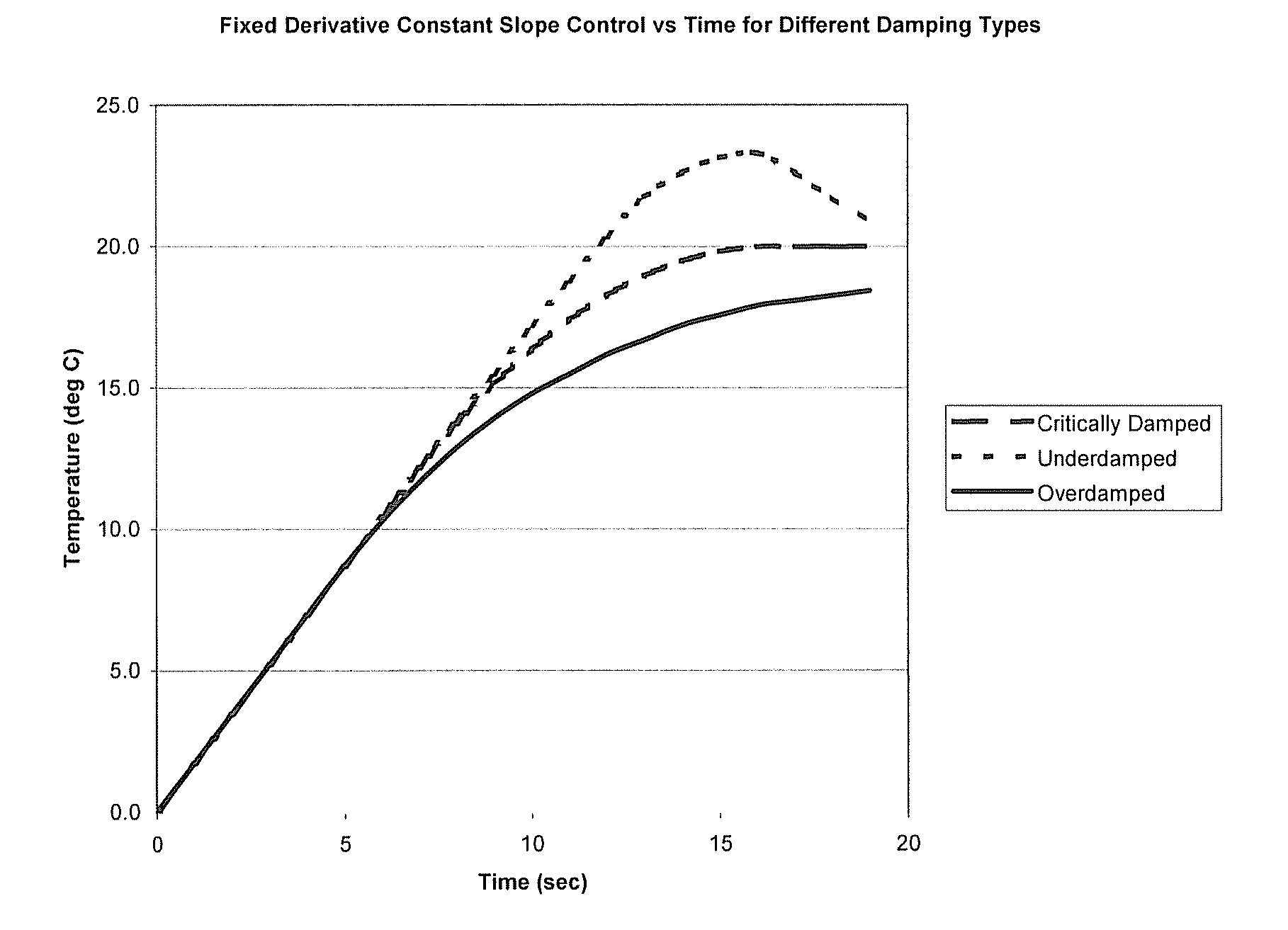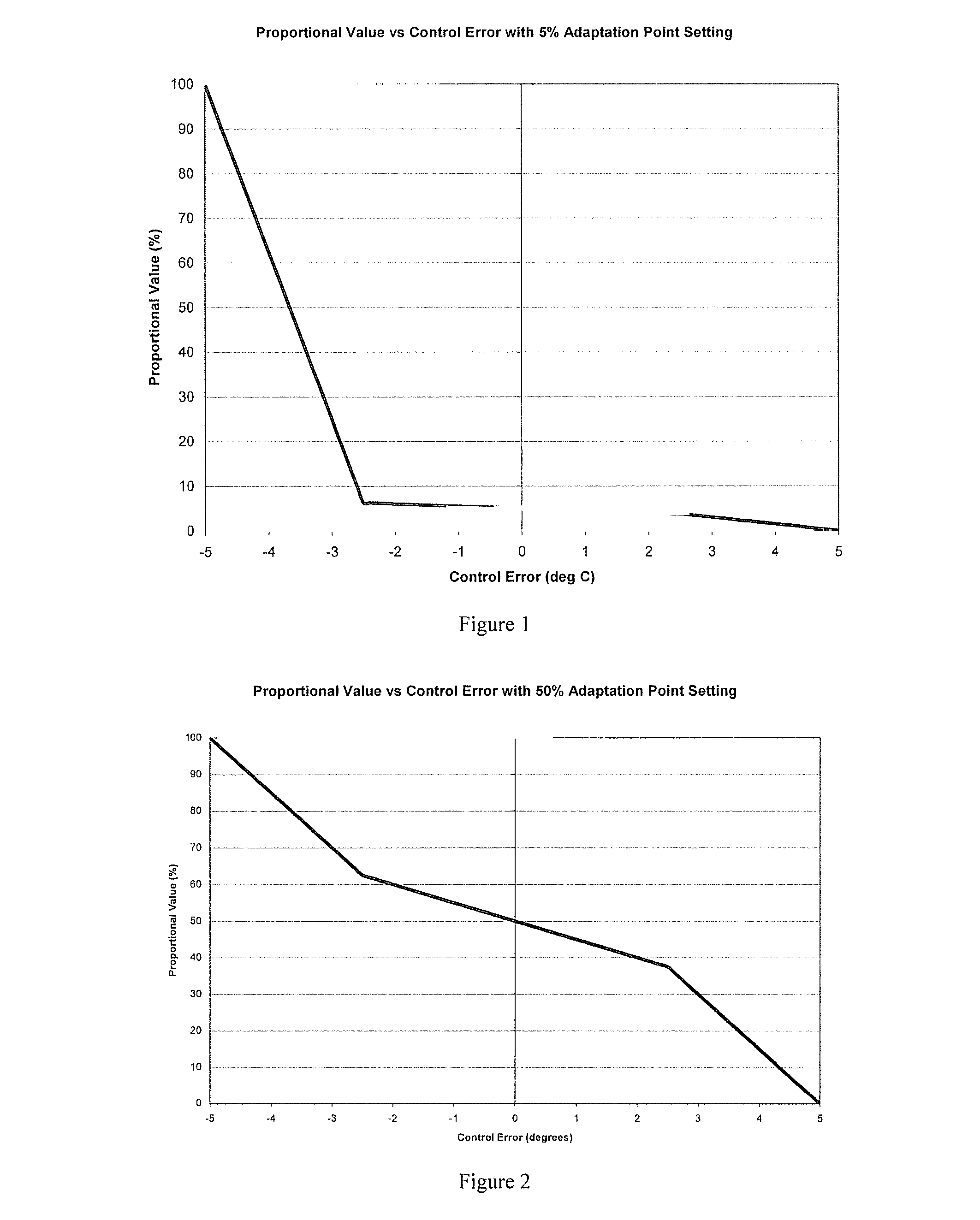Heater and motor control
a motor control and heater technology, applied in the direction of electric controllers, controllers with particular characteristics, instruments, etc., can solve the problems of poor temperature regulation, limited control of temperature, and inability to achieve truly versatile systems with fixed pid control
- Summary
- Abstract
- Description
- Claims
- Application Information
AI Technical Summary
Benefits of technology
Problems solved by technology
Method used
Image
Examples
Embodiment Construction
[0016]Adaptive control techniques were invented for the Temperature Control Modules to provide a platform that can control any heater in the various setups it may see in the field. The limitations of PID control are overcome by taking a different approach to temperature control.
[0017]In creating the control algorithm, it was noted that temperature control can be broken into two crucial aspects: control of slope to reach the setpoint, and steady state control after the setpoint is reached. These can be treated somewhat independently of each other, particularly for very slow systems such as Graco's THERM-O-FLOW platen. The control algorithm needed to address this fact in order to be successful.
[0018]The integral term is problematic in controls and can really be considered the equivalent of a band-aid because it is a summation of past errors. The problem with the integral term is that it has a tendency to create oscillations in the control by adding up to a value that is too large when...
PUM
 Login to View More
Login to View More Abstract
Description
Claims
Application Information
 Login to View More
Login to View More - R&D
- Intellectual Property
- Life Sciences
- Materials
- Tech Scout
- Unparalleled Data Quality
- Higher Quality Content
- 60% Fewer Hallucinations
Browse by: Latest US Patents, China's latest patents, Technical Efficacy Thesaurus, Application Domain, Technology Topic, Popular Technical Reports.
© 2025 PatSnap. All rights reserved.Legal|Privacy policy|Modern Slavery Act Transparency Statement|Sitemap|About US| Contact US: help@patsnap.com



